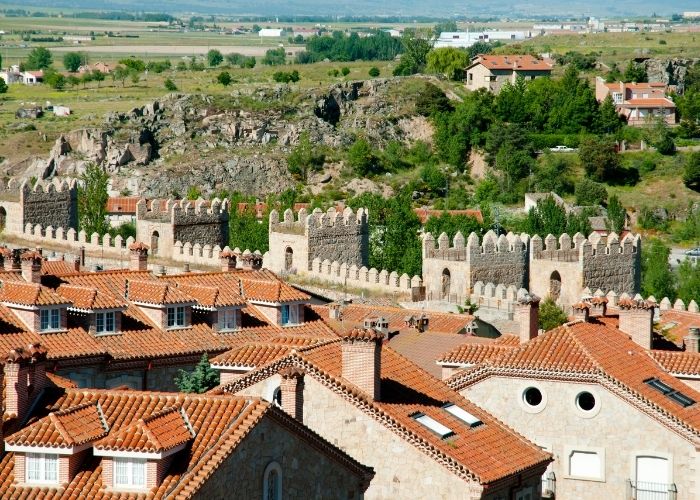MADRID – According to the ‘Red List of Heritage’, a thousand Spanish monuments are currently in danger of disappearing. A list was prepared by the non-profit organisation Hispania Nostra whose aim is to defend the cultural and natural heritage of Spain.
This Red List was first established in 2007 and includes Spanish cultural heritages that are in a very dilapidated state, have been substantially altered/degraded, or are in danger of being destroyed. However, by highlighting these monuments, Hispania Nostra hopes that municipalities or relevant organisations will invest in their restoration or consolidation.
This week, the list reaches a thousand monuments for the first time with the addition of the Cuadrilleros Hermitage, in Ledesma (Salamanca), a small 12th-century temple that is in a deeply ruined state. Because part of the roof has already collapsed.
Per region
Of all the autonomous communities, Castilla y León tops the list with 356 monuments. Followed by Andalucia with 166 dilapidated buildings. Next come Aragon (104); Extremadura (70); Galicia (63); Valencian Community (62); Murcia (47); Cantabria (44); Madrid and Asturias (30); Catalonia and Navarre (28); Basque Country (22); La Rioja (18); Canary Islands (13); Balearic Islands and Melilla (3) and Ceuta (2).
Furthermore, the Red List is drawn up on the basis of complaints and photos that citizens themselves send to Hispania Nostra. These are then checked and analysed by the scientific committee of the association.
Green List
Hispania Nostra has also introduced a Green List. This will list the monuments that have been removed from the Red List after action was taken to preserve them. Currently, there are 181 monuments on the Green List of restored monuments.
Example Green List
The Reales Atarazanas in Seville is on the Green List because the Andalucian Institute of Historic Heritage is carrying out restoration and rehabilitation work on the monumental complex.
This royal shipyard from 1252 is an emblematic heritage. It is one of the largest and oldest preserved ‘atarazanas’ of its kind in Spain and one of the most important in the world. They were commissioned by Alfonso X the Wise to build galleys to fight the North African Muslims – ‘the heathen people’.
The monument was placed on the Red List because a large cafeteria with a spacious terrace was built with the approval of the municipality. Due to the construction works, the structure of the complex was substantially changed. However, those changes were absolutely inappropriate and not allowed in a monument of this category. The works are now being undone in order to subsequently establish a cultural centre in it while preserving the original structure.
Examples Red List
An example of a monument on the Red List is Trapiche del Prado in Marbella. This 1644 building is emblematic of the once-thriving sugar cane industry in the province of Málaga. The reason for inclusion on the Red List: “Progressive deterioration due to abandonment. Uncontrolled vegetation and scrub causes severe cracks and damage”.
City Wall Altea
Another example of a Red List monument is the Renaissance city wall in Altea built in 1609 by Cristóbal de Palafox Rebolledo, Marquess of Ariza and lord of the barony of Altea, after the expulsion of the Moors. Moreover, due to urban development, there are significantly fewer remains of the wall. The north side is practically complete, the east side is still recoverable and the remains of the castle bastion have been preserved in the corner of the square. However, the special elements have disappeared: the castle —almost in its entirety—, Casa de la Senoria and Casa del Consell i Presó. Furthermore, parts are hidden behind buildings and houses.
Black list
The saddest list is the Black List. This lists all the monuments that have been removed from the Red List because they have completely disappeared. Or because their essential values and characteristics have been irretrievably destroyed. There are currently 11 monuments on it.
Environment city wall Ávila on the Black List
An example of a monument on the Black List is the ‘surroundings of the wall of Ávila‘. A newly built Municipal Exhibition and Congress Centre has been placed pontifically in front of Ávila’s famous old city wall: “Abominable visual impact of the new Municipal Exhibition and Congress Centre, destroying the ancient historical view of Ávila. Multiple urbanisations and constructions too close to the walls .” This is what Hispania Nostra reports here.


